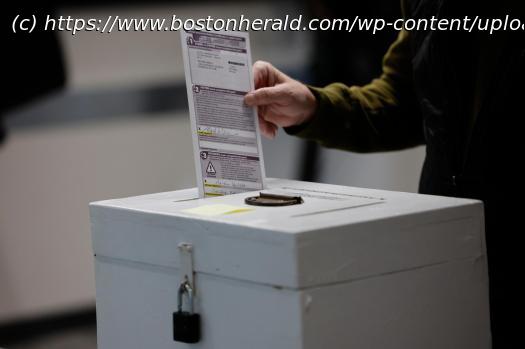President Donald Trump’s executive order seeking broad changes to how elections are run in the U.S. is vast in scope and holds the potential to reorder the voting landscape.
President Donald Trump’s executive order seeking broad changes to how elections are run in the U.S. is vast in scope and holds the potential to reorder the voting landscape across the country, even as it faces almost certain litigation.
He wants to require voters to show proof that they are U.S. citizens before they can register for federal elections, count only mail or absentee ballots received by Election Day, set new rules for voting equipment and prohibit non-U.S. citizens from being able to donate in certain elections.
A basic question underlying the sweeping actions he signed Tuesday: Can he do it, given that the Constitution gives wide leeway to the states to develop their own election procedures? Here are some of the main points of the executive order and questions it raises.Voters would need to provide citizenship documents to register
Trump’s order calls for the federal voter registration form to be amended so prospective voters must provide documentary proof of citizenship, such as a U.S. passport or a birth certificate.
It also says states should turn over their voter lists and records of voter list maintenance to the Department of Homeland Security and the Department of Government Efficiency for review, and directs federal agencies to share data with states to help them identify noncitizens on their rolls.
If states refuse to collaborate with federal law enforcement to prosecute election crimes, they could potentially lose out on federal grants, the order says.
Noncitizen voting, which is already a felony in federal elections that can lead to prison time and deportation, is exceedingly rare. Still, Trump falsely claimed in 2024 that it might happen in large enough numbers to sway the outcome of the presidential race, and it has been a top conservative priority in recent months.
Republicans have been trying to get a documentary proof of citizenship requirement through Congress, a goal this order seeks to accomplish. Voting rights groups have expressed concern about such a requirement, saying it could disenfranchise the millions of Americans who do not have proof of citizenship readily available.Mail ballots would need to be received by Election Day
The order requires votes to be “cast and received” by Election Day and says federal funding should be conditional on state compliance with that deadline. Currently, 18 states and Puerto Rico accept mailed ballots received after Election Day as long they are postmarked on or before that date, according to the National Conference of State Legislatures.
Perhaps no state is more notorious for drawn-out vote counts than California, the nation’s most populous. It allows ballots to be counted if they are received up to seven days following the election as long as they are postmarked by Election Day.
Most California voters cast ballots they receive in the mail, and in the pursuit of accuracy, thoroughness and counting every vote, the state has gained a reputation for tallies that can drag on for weeks or even a month or more.
Home
United States
USA — mix Trump’s executive order on elections is far-reaching. But will it actually stick?






